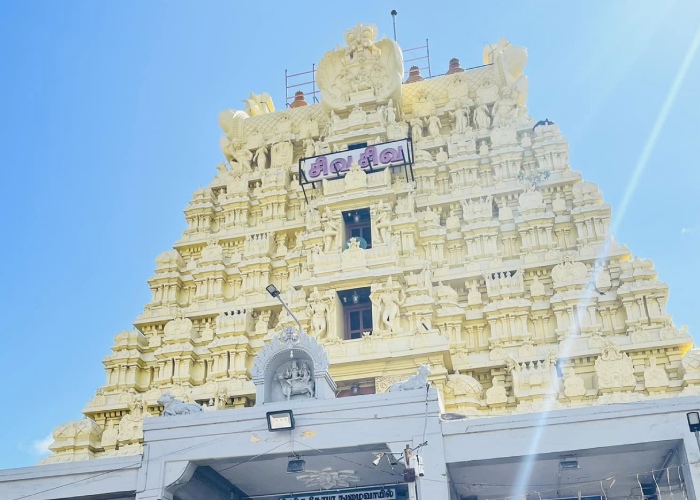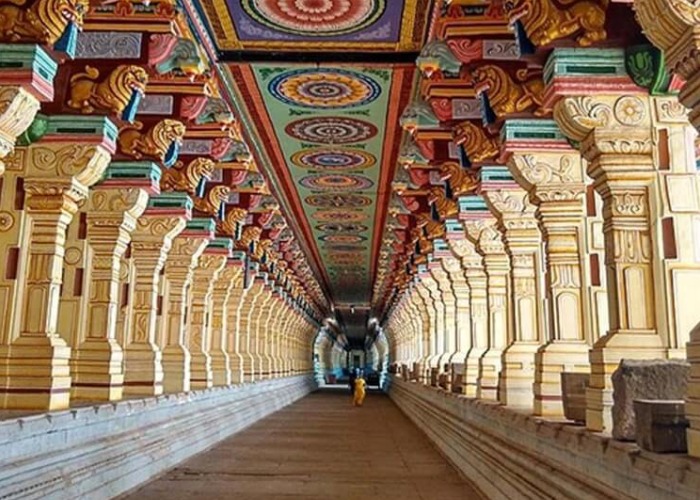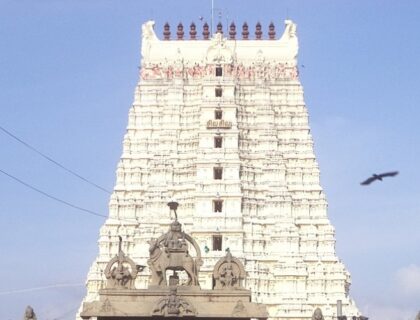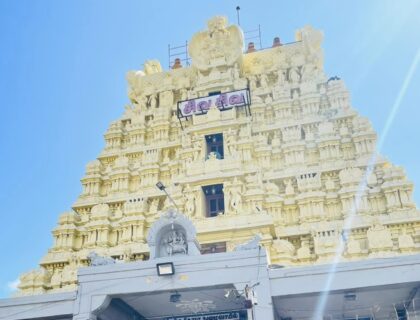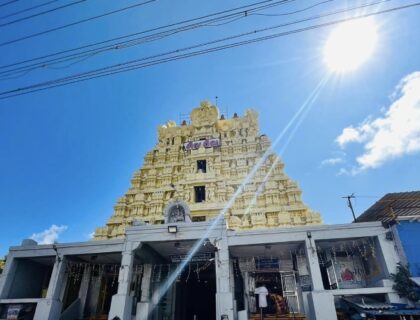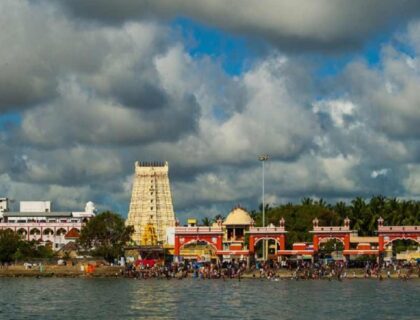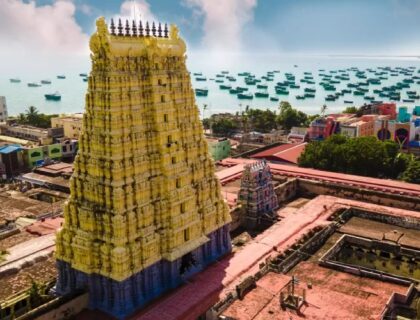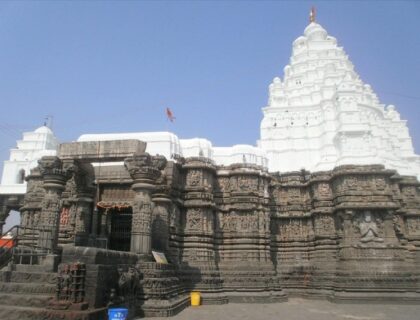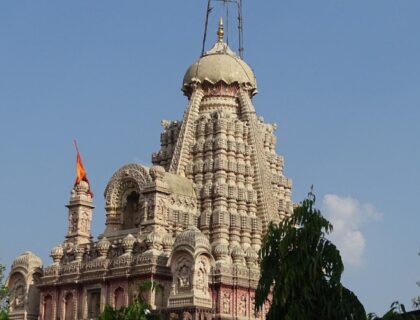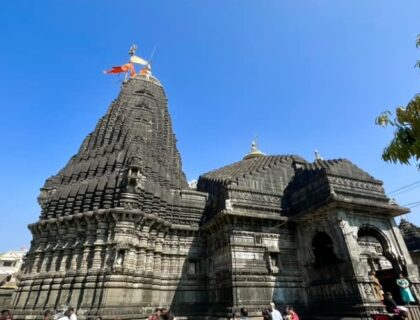Rameshwaram Jyotirling
Ramnath or Rameshwaram Jyotirling or Ramanathaswamy temple is one of the 12 Jyotirling Temples of Lord Shiva and is located on Rameshwaram Island in Tamil Nadu. Rameswaram Jyotirling is one of the primary places of worship for Lord Shiva Devotees and is one of the Biggest Temple complexes in the world.
The Rameshwaram Jyotirling temple is one of the Char Dhams Temples which are very sacred for Hindu devotees. It is located in the Ramnathapuram district of Tamil Nadu. Jyotirling arranged in Rameswaram temple is one of Bhagwan Shiva’s 12 Jyotirling, and Rameshwaram is regarded as the 11th Jyotirling. The corridor of this temple is very beautiful, displaying ancient Indian art and civilization. The Rameswaram Temple is one of India’s historic temples, and devotees travel from all over the world to learn about its magnificence and history.
The story behind Rameshwaram Jyotirling
According to legend, Lord Rama worshipped Lord Shiva on his way back from Lanka after defeating Ravana, the demon king. Lord Rama prayed to Lord Shiva to atone for the sin of murdering Ravana, a Brahmin and ardent Shiva devotee. He sent Lord Hanuman to Lord Shiva’s home, Mount Kailash, to bring the linga because there was no Shiva shrine there.
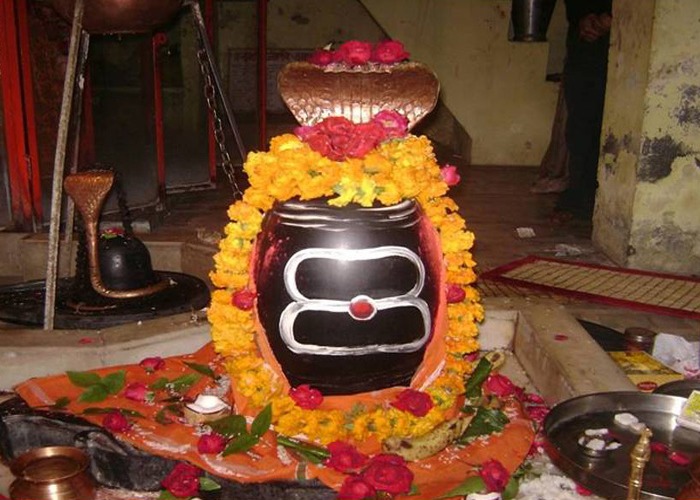
However, Lord Hanuman was unable to return in time for the puja, so Goddess Sita built a linga out of the sand, the Ramalinga, which Lord Rama revered. Hanuman was dissatisfied that Rama had not waited for his linga when he returned. To appease Hanuman, Rama instructed his followers to worship the linga Hanuman had brought, which he named the Vishwalinga, before the Ramalinga.
History of Rameshwaram Jyotirling
The Rameshwaram Jyotirling in its current form is thought to date from the 17th century, while Fergusson believes the small vimana in the west corridor dates from the 11th or 12th centuries. King Kizhavan Sethupathi or Raghunatha Kilavan is said to have authorised the temple’s construction. The Jaffna kings of the Pandya Dynasty made significant contributions to the temple. To renovate the temple’s sanctum sanctorum, King Jeyaveera Cinkaiariyan (1380-1410 CE) shipped stone blocks from Koneswaram temple in Trincomalee.
Gunaveera Cinkaiariyan (Pararacacekaran V), a trustee at Rameswaram who oversaw the structural development of this temple as well as the promotion of Saivite beliefs, donated a portion of his revenue to Koneswaram. The enormous sums spent during Pradani Muthirulappa Pillai’s tenure towards the restoration of the deteriorating pagodas and the magnificent Chockattan Mantapam or the cloistered precincts of the temple at Rameswaram that he eventually completed are especially noteworthy.

Sri Lanka’s rulers also contributed to the temple’s construction; Parakrama Bahu (1153-1186 CE) was involved in the temple’s sanctum sanctorum construction. In addition, Sri Lankan king Nissanka Malla contributed to the temple’s development through donations and the dispatch of workers.
In (1667 CE), Perumal Servaikaran, son of Sokkappan Servaikarar of Pandiyur, donated Pappakudi as a grant to Rameshwaram Temple and one Deva Venkala Perumal Ramanathar. In the Ramnad Kingdom, they are local chieftains under Tirumalai Regunatha Sethupathy Thevar Rein. Government Press, Madras Presidency published the grant details for the Archaeological Survey of India in 1885.
Along with Pappakudi, the villages of Anandur and Urasur have been donated to Rameshwaram Temple. These villages are located in the Melaimakani Seermai province of the Radhanallur Division.
Source – Wikipedia
Architecture of Rameshwaram Jyotirling
The Rameshwaram Jyotirling primary deity is Ramanathaswamy (Shiva) in the form of a lingam. Inside the sanctum, there are two lingams: one built by Rama from sand and residing as the main deity, known as the Ramalingam, and one brought by Hanuman from Kailash, known as the Vishvalingam. Rama is said to have ordered that the Vishvalingam be worshipped first because it was brought by Hanuman – a tradition that continues to this day.
There is a high compound wall (madil) on all four sides of the temple premises, measuring about 865 feet furlong from east to west and 657 feet furlong from north to south, with huge towers (Gopurams) to the east and west and finished gate towers to the north and south. The temple’s interior features long corridors that run between massive colonnades on platforms more than five feet high.
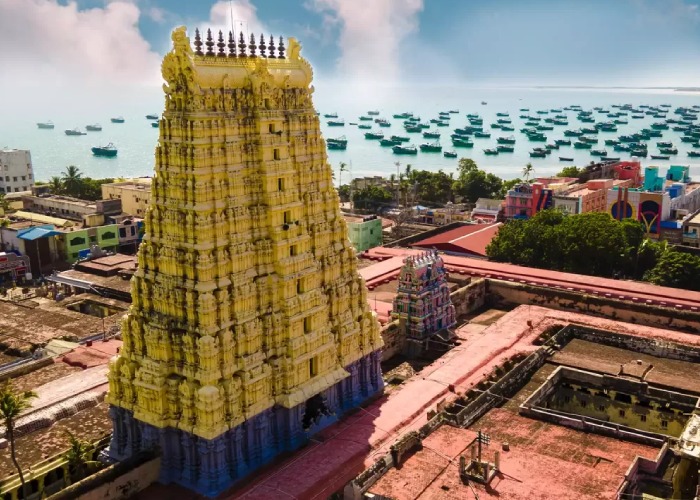
The second corridor is made up of sandstone pillars, beams, and a ceiling. The intersection of the third corridor on the west and the paved path leading from the western gopuram to the Setumadhava shrine forms a unique structure in the shape of a chess board, popularly known as Chokkattan Madapam, where the Utsava deities are adorned and kept during the Vasanthotsavam (Spring festival) and the 6th-day festival in Adi (July-August) and Masi (February-March).
A separate temple for Parvati, known as the Parvatavardhini temple, is located near Rameshwar’s main temple. Aside from that, there are temples dedicated to Santana Ganapati, Veerabhadra Hanuman, navagrahas, and other deities. Gandhamaadhan mountain is located approximately 2 kilometres from the main temple. Despite being a sandy area, it is lush and green, with a diverse flora. This is Rameshwar’s Nandanavan.
Facts about Rameshwaram Jyotirling
- Rameshwaram Jyotirling is one of the four major char dham sites, along with Dwaraka in Odisha, Badrinath in Uttarakhand, and Puri in Odisha.
- Rameshwaram Jyotirlinga gets its name because Lord Rama worshipped Lord Shiva in this spot.
- The Ramayana says that Rama built the Ram Setu Bridge to get to Sri Lanka and save Sita from Ravana. This bridge connects mainland India and Sri Lanka.
- Rameshwaram Jyotirling, which covers an area of 15 acres, is a prime example of Dravidian architecture.
- The Pamban Bridge is a railway bridge that spans the Palk Strait and connects the Pamban Island town of Rameshwaram to India’s mainland.
- There are sixty-four Tīrthas (holy water bodies) in and around the island of Rameswaram, Tamil Nadu, India. According to Skānda Purāṇa, twenty-four of them are important.
- The Rameshwaram Jyotirling is one of the holiest Hindu Char Dham (four divine sites) sites comprising Badrinath, Jagannath Puri, Dwarkadhish and Rameshwaram Jyotirling.
Famous Festivals In Rameshwaram Jyotirling
- Mahashivaratri: The Maha Shivaratri festival is a grand event at Rameshwaram Jyotirling Temple, as it is at all important Shiva temples. It is the main festival in town. Every year, millions of devotees flock to this town to catch a glimpse of the Lord on this auspicious day, which falls in February/March.
- Ganesh Chaturthi: Dedicated to Lord Ganesh, this festival is celebrated in August / September
- Durga Puja. (Winter) – Devotees celebrate Navaratri at this temple in the month of Ashwin (Sep-Oct) as well as celebrate the triumph of the Goddess Durga over the buffalo demon (Mahishasura).
- Navaratri. (Summer) – They celebrate other Navaratri in the fortnight of the Chaitra (March-April). Every nine days they worship Navadurga (nine Durgas).
How to Reach Rameshwaram Jyotirling
By Air: The nearest airport is at Madurai, at a distance of 154 km
By Rail: Rameswaram Railway Station (RMM) at a distance of nearly 1 kilometre from Rameswaram Temple.
By Road: State buses run from the railway station to various locations in and around Rameshwaram. Taxis, auto-rickshaws, cycle-rickshaws and tongas are available for local transportation. On the island, there is also a city bus service.
Also Read – Trimbakeshwar Jyotirling
Location
Facilities
- Drinking Water
- Pooja Item Shops
- Prasad Shops
- Restaurants Nearby
- Resting Room
Frequently Asked Questions
Evening: 03:00 pm to 09:00 pm.



